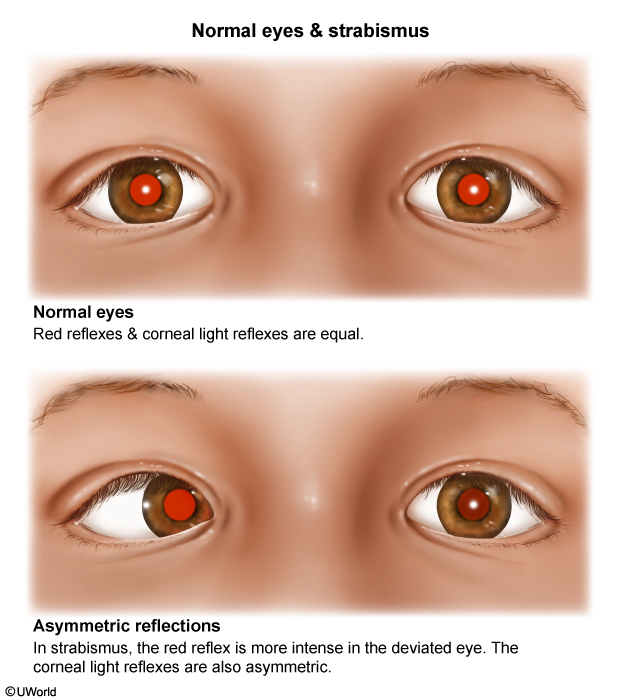Strabismus
Article Sections
Introduction
Strabismus is ocular misalignment in any direction (eg, horizontal, vertical), occurring in about 4% of the population. If untreated in childhood, strabismus can lead to amblyopia (ie, functional reduction in visual acuity due to abnormal development of the visual cortex) in the misaligned eye.
Pathophysiology and risk factors
Six extraocular muscles control movement of each eye. Strabismus occurs when there is an imbalance or uncoordinated control of movement, causing eye deviation. Many cases are idiopathic, but known causes include:
- Congenital causes (eg, congenital fourth nerve palsy)
- Acquired causes:
- Structural abnormalities of the eye or orbit (eg, orbital fracture entrapping the inferior rectus muscle)
- Refractive errors (eg, hyperopia causing excess convergence when focusing on near objects)
- Neuromuscular disorders affecting control of eye movements (eg, myasthenia gravis, multiple sclerosis, cerebral palsy)
Continue Learning with UWorld
Get the full Strabismus article plus rich visuals, real-world cases, and in-depth insights from medical experts, all available through the UWorld Medical Library.
Figures

Figure 1

Figure 2
Images

Image 1

Image 2

Image 3
Tables
Table 1